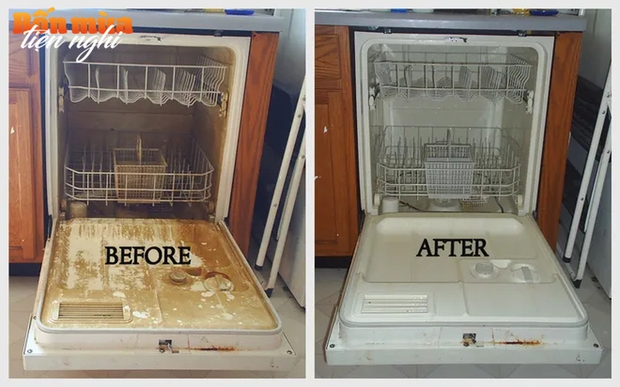
The introduction of dishwashers, much like washing machines and vacuum robots, has alleviated some of the burdens of household chores. The primary function of a dishwasher is to clean dining utensils and other suitable items using the built-in water and electrical systems.
Due to this function, some users assume that the dishwasher can clean itself while washing these items, eliminating the need for manual intervention.
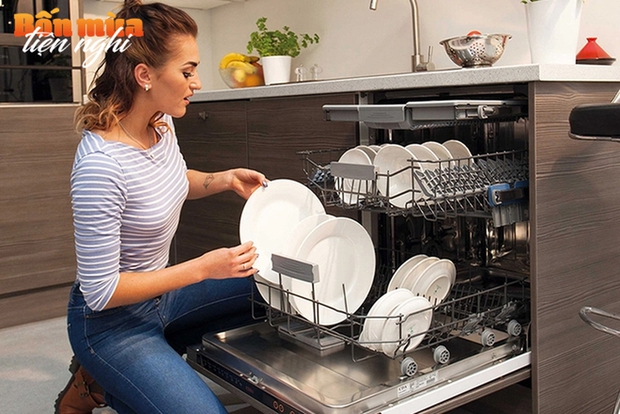
Many people think that dishwashers don’t require cleaning. (Illustration)
However, this is a misconception. Some users have pointed out that prolonged use of a dishwasher without regular cleaning can lead to reduced performance, with oxidation residue building up and internal pipes becoming clogged.
Therefore, it is recommended to clean your dishwasher periodically, depending on usage frequency. You can choose to clean it using the built-in cleaning mode or opt for manual cleaning by disassembling and scrubbing the internal components.
For a family that uses the dishwasher twice a day, it is advisable to clean it every two months.
Methods for Cleaning Your Dishwasher
1. Using the Built-in Cleaning Mode
Cleaning your dishwasher with the built-in mode is the simplest method. Most dishwashers have this feature, often labeled as “Machine Care.”
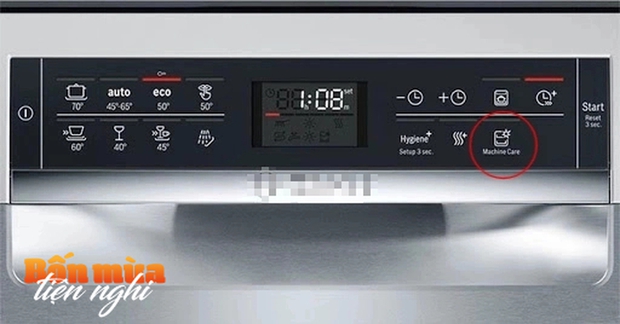
The Machine Care mode allows for easy dishwasher cleaning. (Illustration)
To use this mode, simply add the appropriate cleaning agent, such as liquid or tablet detergent, and press the button to start the cycle.
However, this method is only suitable for dishwashers that are not excessively dirty.
2. Manual Cleaning
If your dishwasher requires a more thorough cleaning, you can opt for the manual method, which involves disassembling and cleaning each component individually.
When cleaning manually, it is necessary to detach the internal parts of the dishwasher for optimal results. The critical components to remove include the filter and the water spray arms.
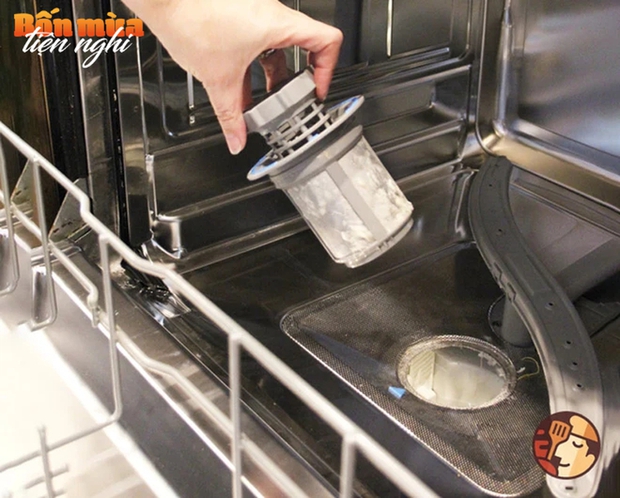
The dishwasher’s filter needs to be disassembled and cleaned thoroughly. (Illustration)
First, let’s focus on the filter. The dishwasher’s filter consists of a primary filter, a fine filter basket, and a coarse filter. The primary filter traps small food particles, preventing them from entering the drain pipe. The fine filter basket captures food residue and dirt, while the coarse filter traps larger food particles.
To remove the filter assembly for cleaning, turn it counterclockwise and then slowly lift it out. The sequence for removal is the coarse filter, followed by the fine filter basket, and finally, the primary filter.
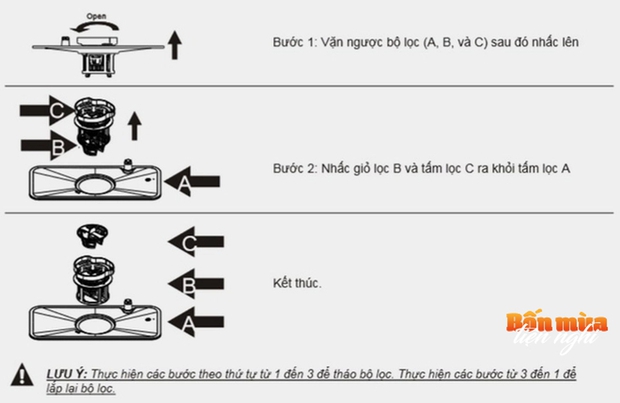
Instructions for safely removing the dishwasher’s filter. (Illustration)
Take the entire assembly to the sink and begin cleaning. You can use dish soap, liquid detergent, or even baking soda for this process. Remember to flip the filters upside down before cleaning to ensure that any trapped food particles are released.
After addressing the filters, move on to the water spray arms (also known as sprayer arms or spray jets). To clean these, prepare a solution of warm water and soap or water and vinegar, and use a soft-bristled brush to gently scrub the spray holes. You can also use a toothpick to clear any clogged spray holes.
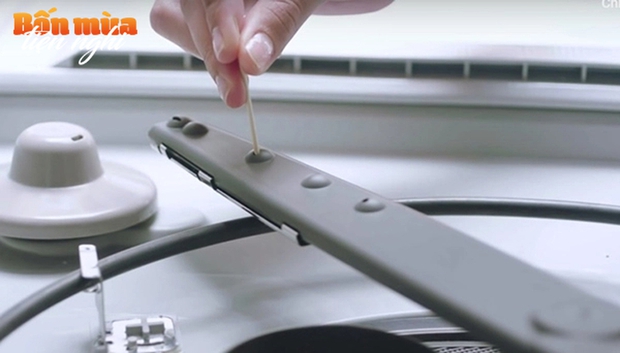
Use a toothpick to clean and unclog the spray holes. (Illustration)
Once the filters and spray arms are clean, allow them to air-dry or gently wipe them with a soft cloth before reassembling them into the dishwasher.
For the exterior and interior of the dishwasher, use a soft cloth and a suitable cleaning agent to wipe down the surfaces gently. Pay extra attention to areas with stubborn grime, but be careful not to scratch the appliance.
Finally, to eliminate odors, place a cup of white vinegar or a few spoons of baking soda in the cutlery basket and run a wash cycle. For vinegar, select the hottest water setting, and for baking soda, choose the shortest cycle.
Both vinegar and baking soda are effective in thoroughly eliminating odors and sanitizing the appliance.
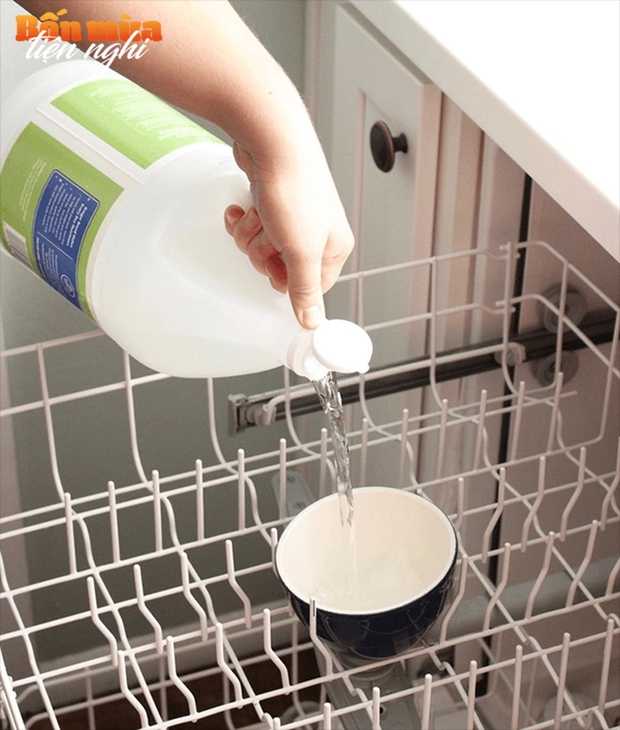
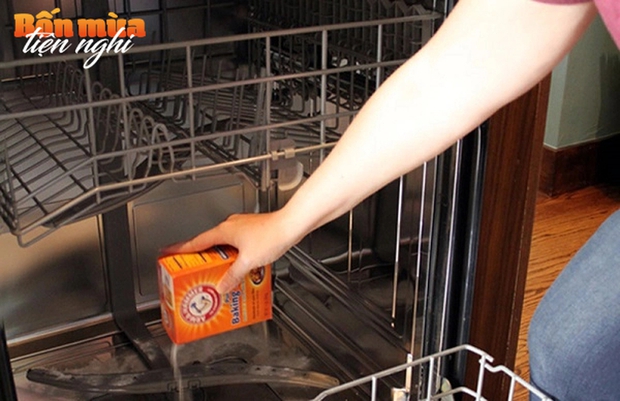
Vinegar and baking soda are effective in eliminating dishwasher odors. (Illustration)
Regularly cleaning your dishwasher not only improves its performance but also prolongs its lifespan, reducing the likelihood of breakdowns due to long-term grime buildup.
Additionally, a well-maintained dishwasher operates more efficiently in terms of water and energy consumption, ensuring that your dishes emerge clean, fresh, and sanitized, contributing to the well-being of your family.
Translated from Trí Thức Trẻ
The Ultimate Guide to Potato Preparation: A Simple and Effective Approach
“Uncover the secrets to preparing potatoes like a pro. Learn the art of swiftly peeling potatoes with precision, enhancing the flavor of boiled potatoes, and mastering the technique of stir-frying potatoes without ending up with a mushy mess. We’ll also reveal how to eliminate the odor of frozen potatoes and maintain the deliciousness of white potatoes. Get ready to elevate your potato game!”
The Magic Dishwashing Machine: Sparkling Clean Dishes, Fresh and Healthy
Introducing a natural and effective cleaning solution for your dishwasher – a twist you’ve never heard of! Forget harsh chemicals and embrace the power of grapefruit peels. Experience sparkling clean dishes and a refreshing aroma with this simple, eco-friendly hack. It’s time to unlock the secrets of nature’s magic and give your dishes a vibrant, chemical-free shine!






































